ANIMO: WildLife Priority Mode
Jiabao Li, 2024
Every year, 2 billion wild animals become victims of roadkill. For reference, approximately 1 million humans die in traffic accidents each year. Roadkill has become a significant cause of death and even extinction of various species. These animals, following their natural instincts, traverse roads, oblivious to the concept of vehicles and the dangers they pose. As human expansion continues, the conflict between wildlife habitats and human development intensifies, often with tragic consequences.
With the development of self-driving cars such as WAYMO, computer vision and AI could detect the crossing animals more quickly and react to avoid collisions. While we talk about the morality of self-driving cars, we talk about passenger priority mode or pedestrian priority mode. Can we have a wild-life priority mode with the goal of recognizing wild animals and reducing collisions on them?
I have been documenting photos of roadkill animals. It shocks me how flat they are after wheels and wheels over them. Some of them have embossed into the road, flattened like a carpet. This exhibition features carpets created from the images of these roadkill animals. A sweeping robot, an autonomous vehicle in its own right, navigates among these dead animal carpets, cleaning up the blood of these incidents.
每年,20亿野生动物被车撞死。作为参考,每年大约100万人在交通事故中丧生。“路杀” 已成为许多物种死亡甚至灭绝的重要原因。这些动物,出于本能在道路上穿行,对车的概念和危险浑然不觉。随着人类领域的不断扩张,野生动物栖息地与人类发展之间的冲突日益加剧,常常带来悲剧性的后果。
随着自动驾驶车如WAYMO的发展,计算机视觉和人工智能可以更快地检测到穿越道路的动物,并采取措施避免碰撞。当我们讨论自动驾驶汽车的道德问题时,我们谈论的是乘客优先模式或行人优先模式。那么,我们能否设立一个以识别野生动物和减少与它们的碰撞为目标的“动物优先模式”呢?
我一直在记录“路杀”动物的照片。巨轮碾压数次之后,它们扁平的像地毯一样。一些动物被压的镶嵌成为了柏油路的一部分。眼前所见的地毯是由这些“路杀”动物的图像制成。一台扫地机器人(自动驾驶车),穿梭于这些死去的动物地毯之间,清理它们的血迹。
Exhibition view at Design Art Tokyo 2024

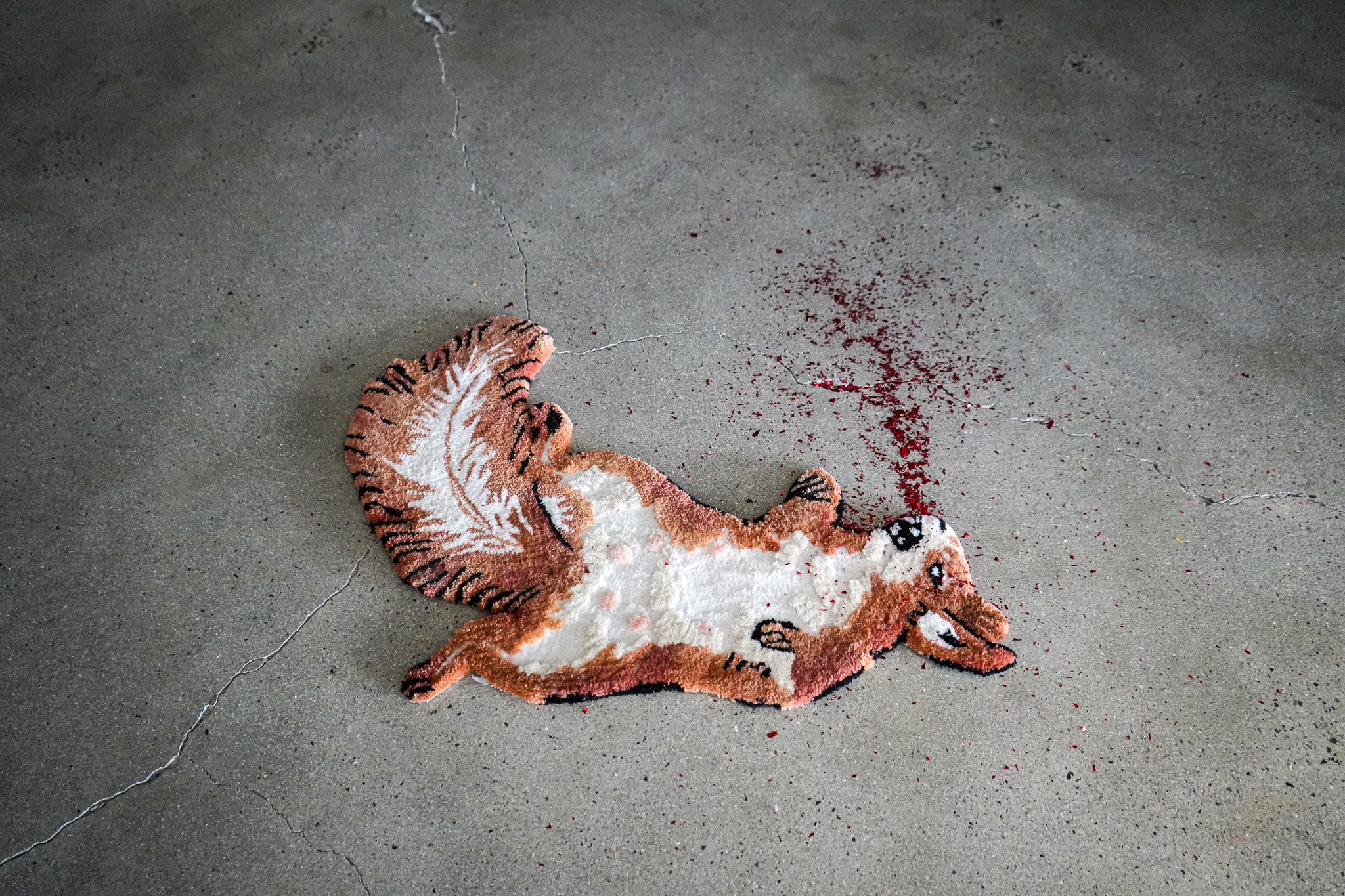
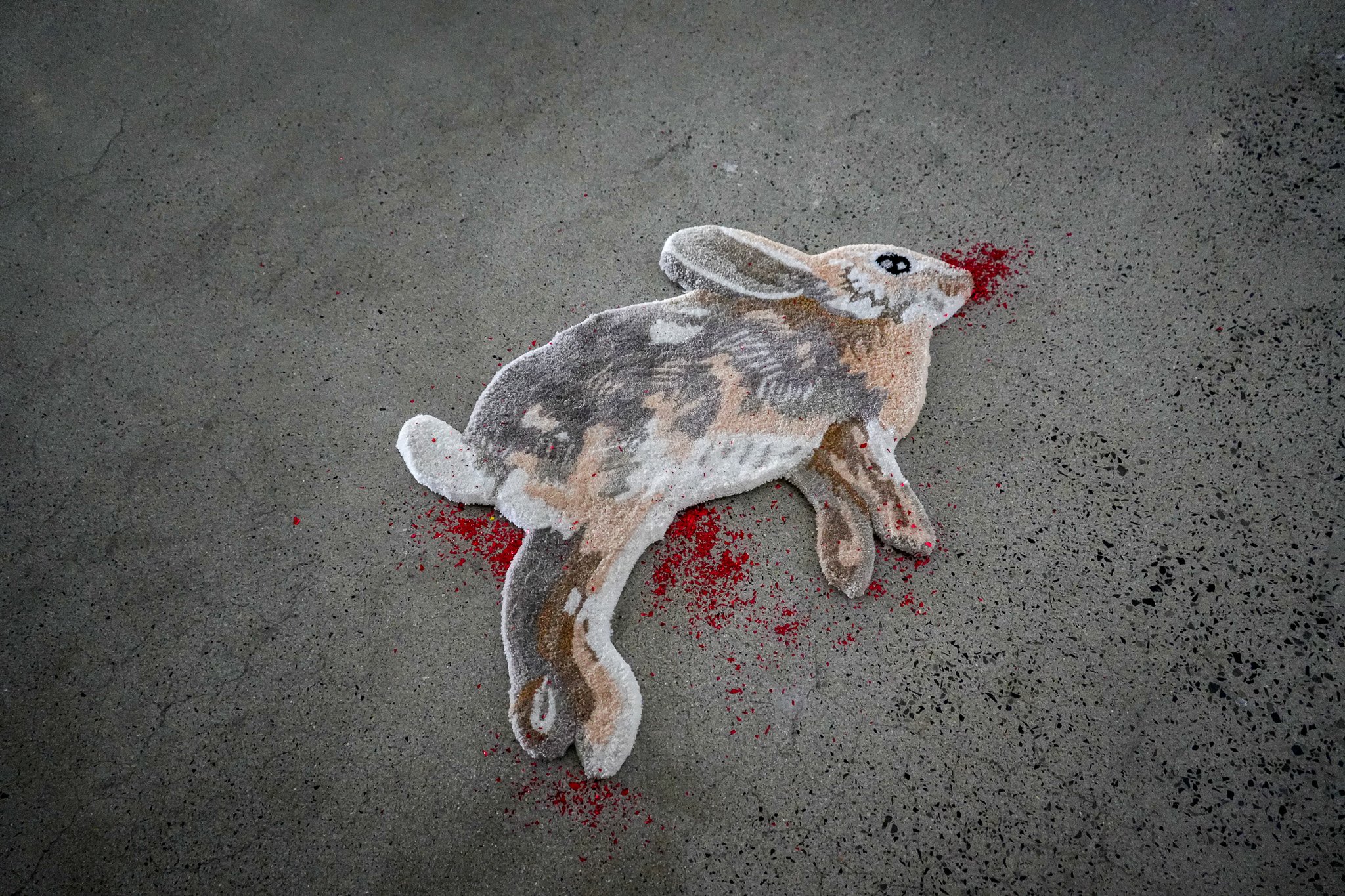
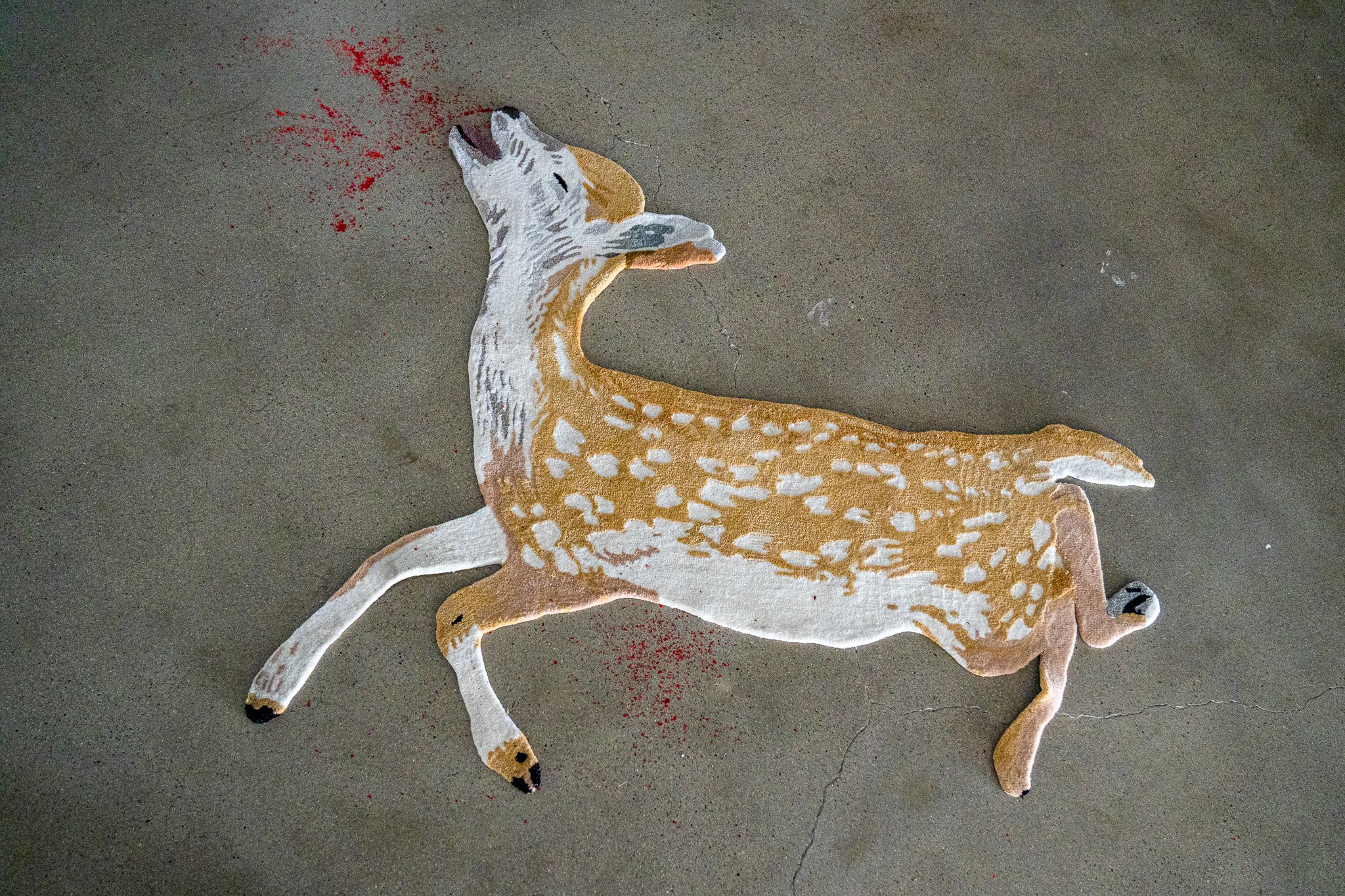


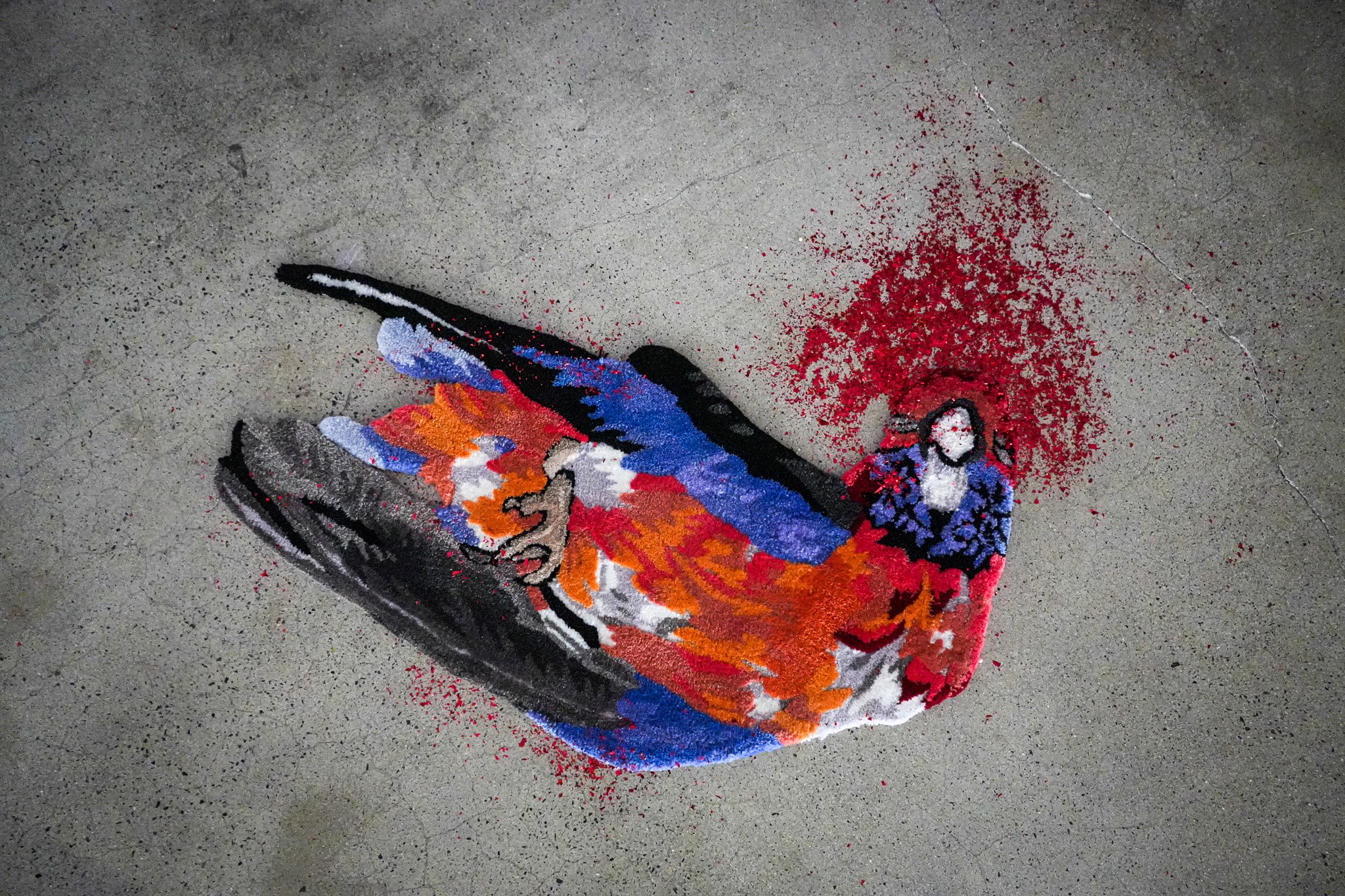


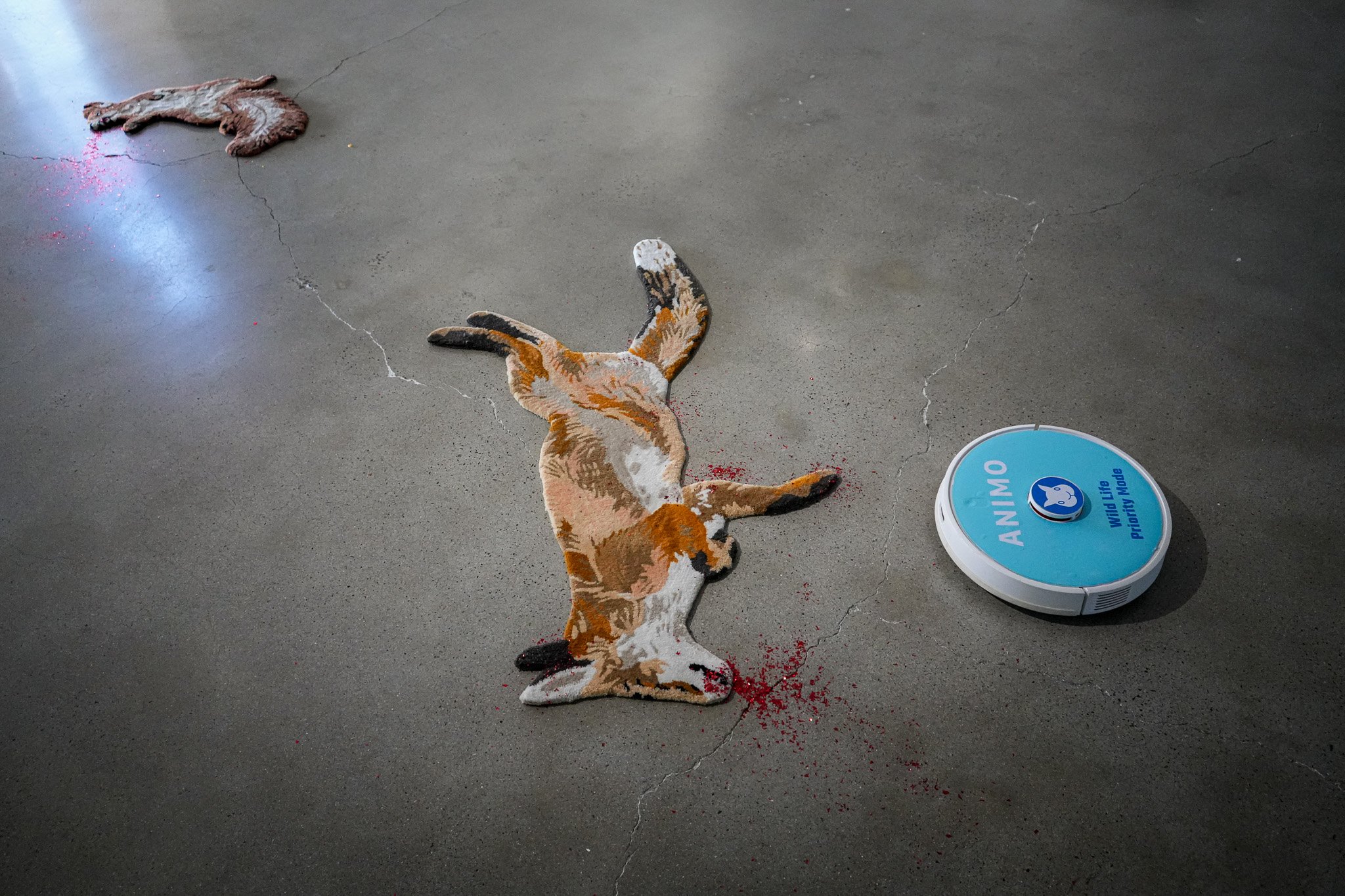
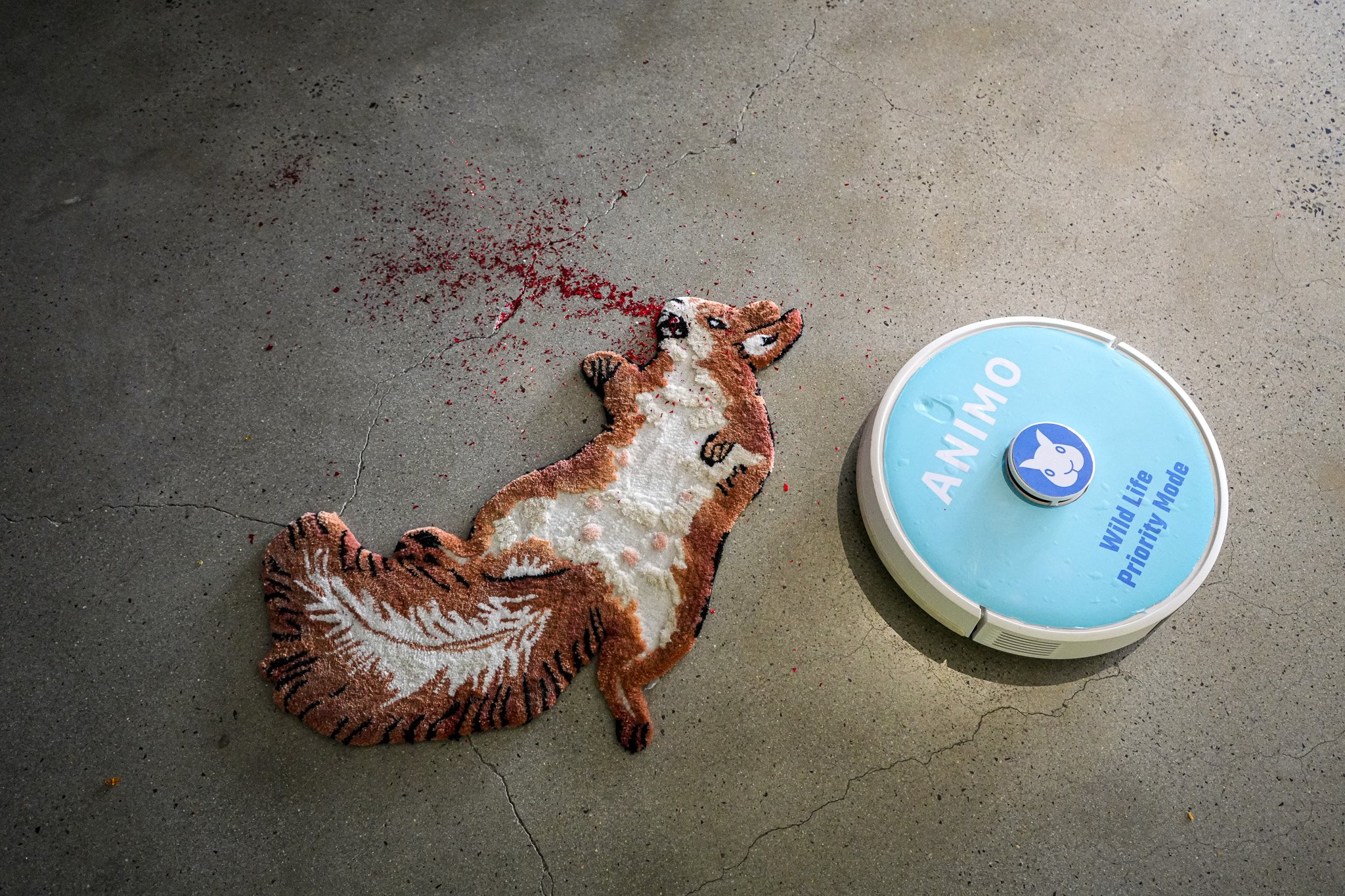

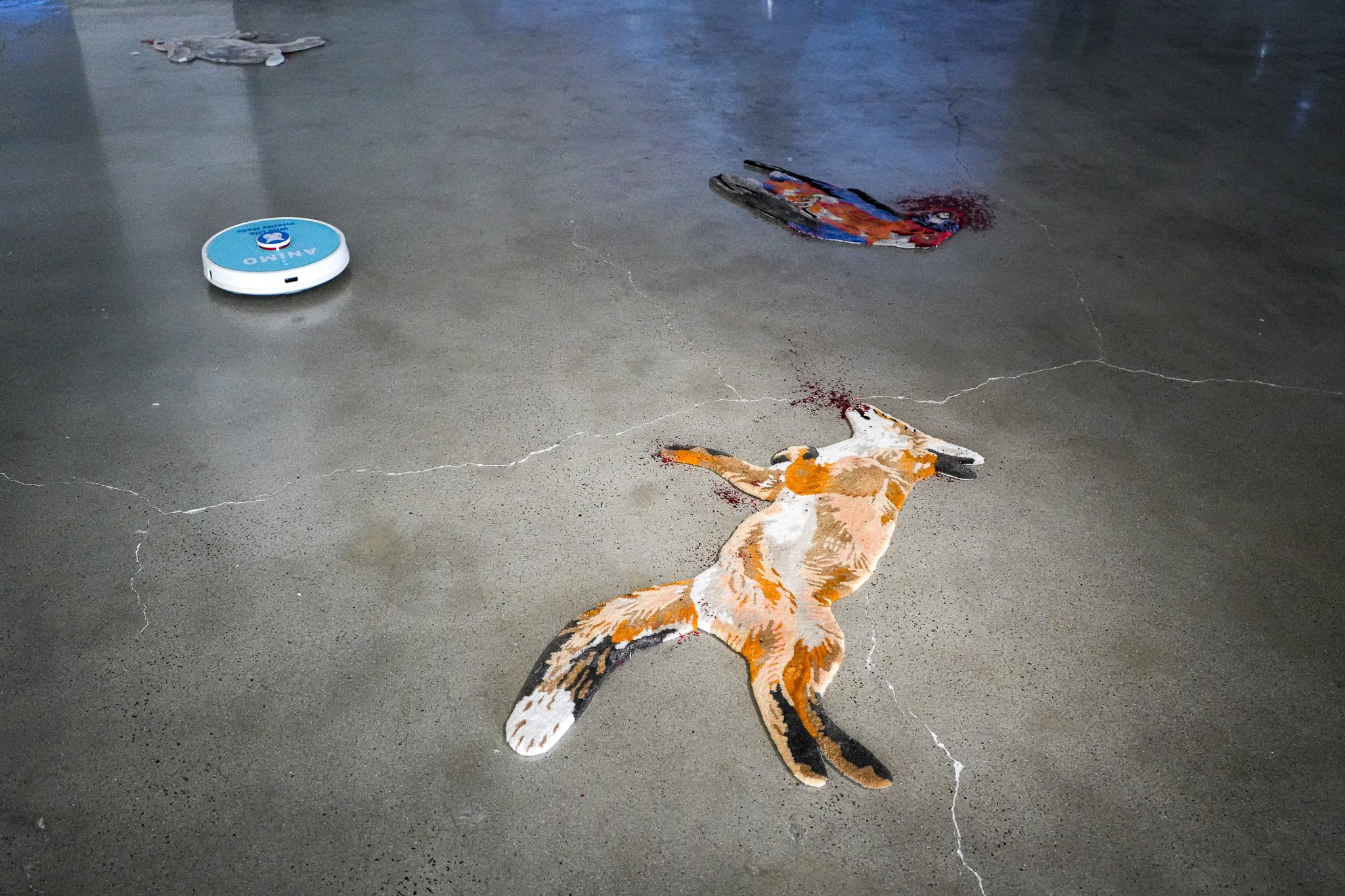
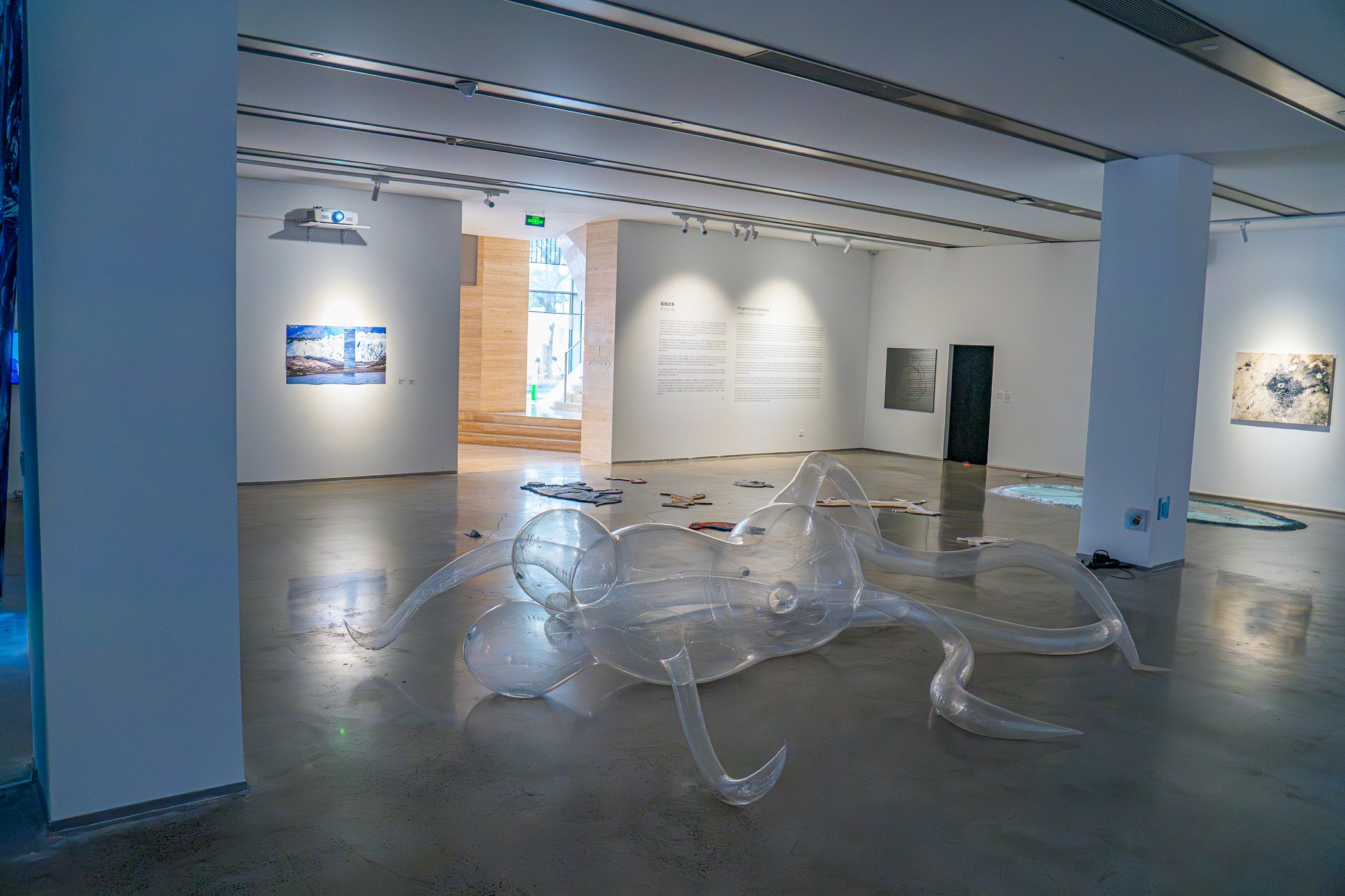
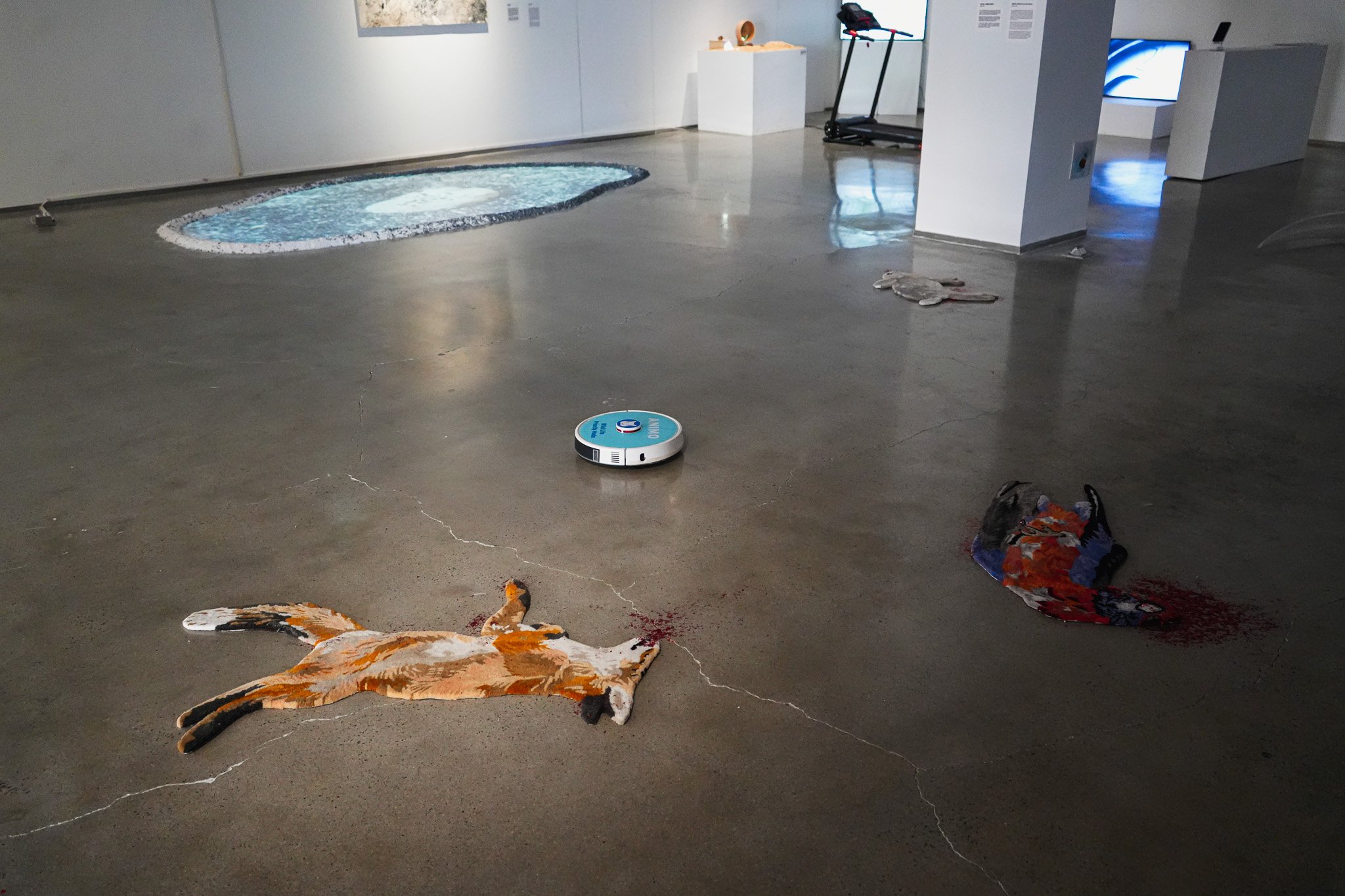
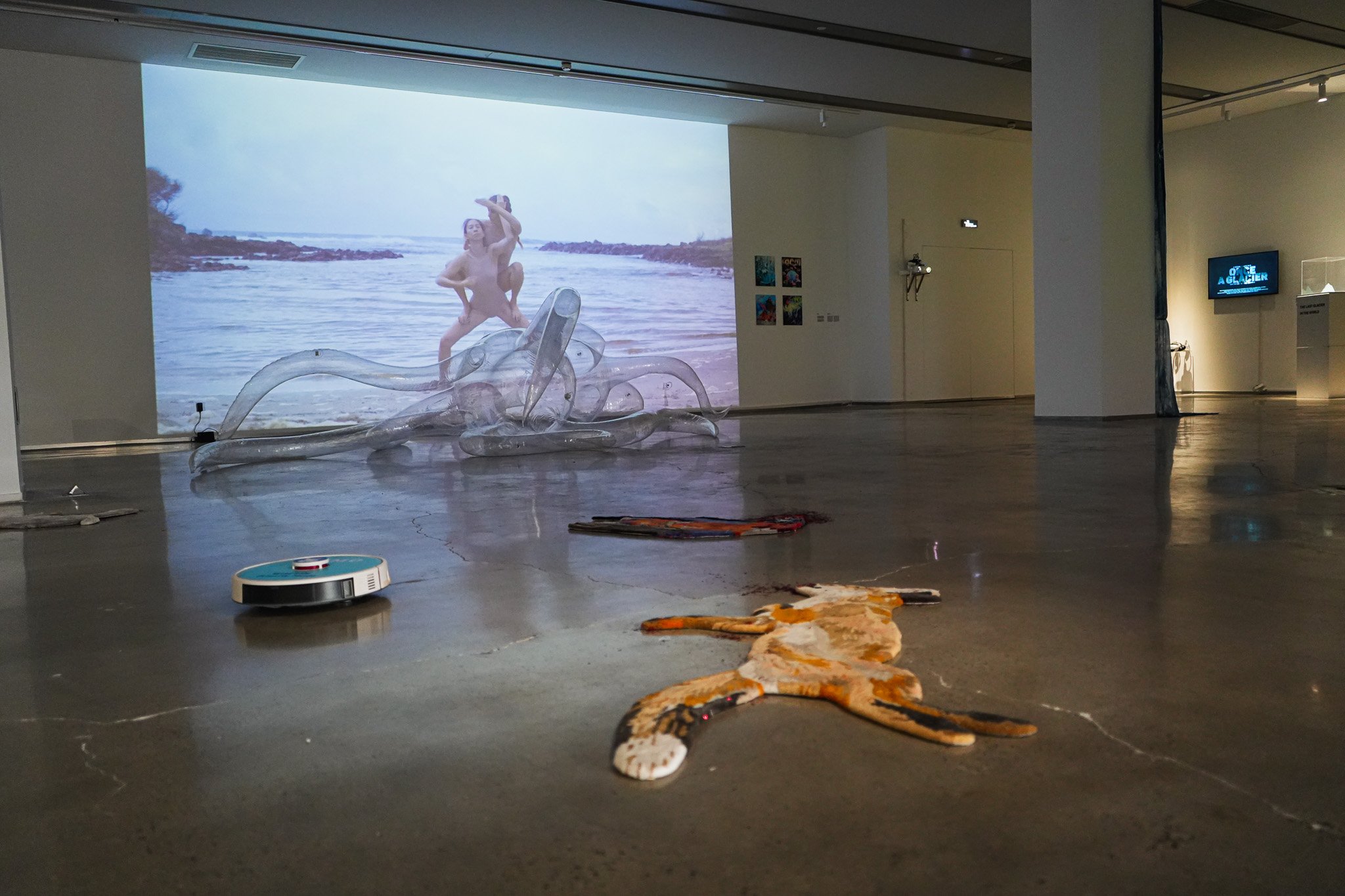
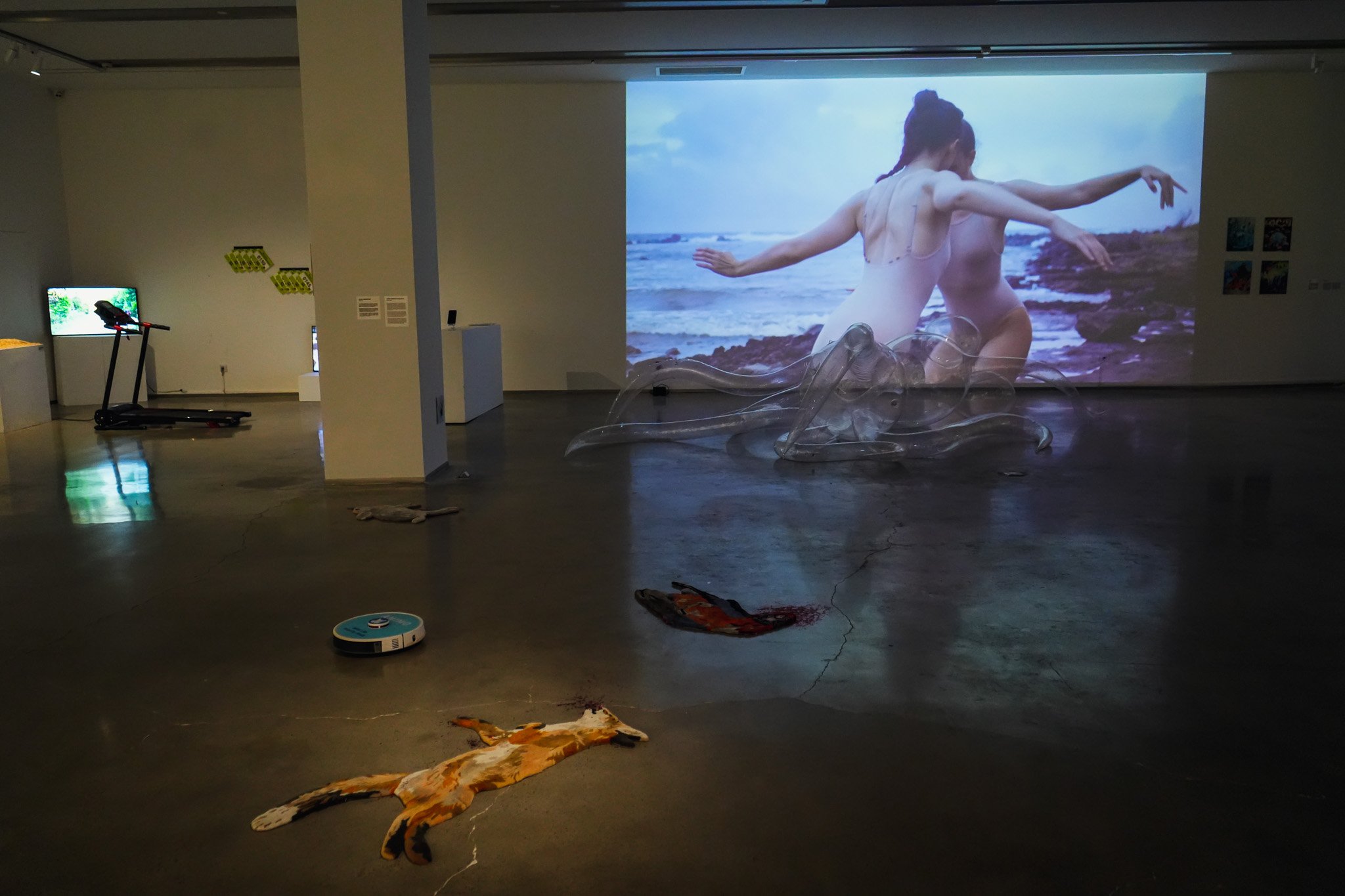
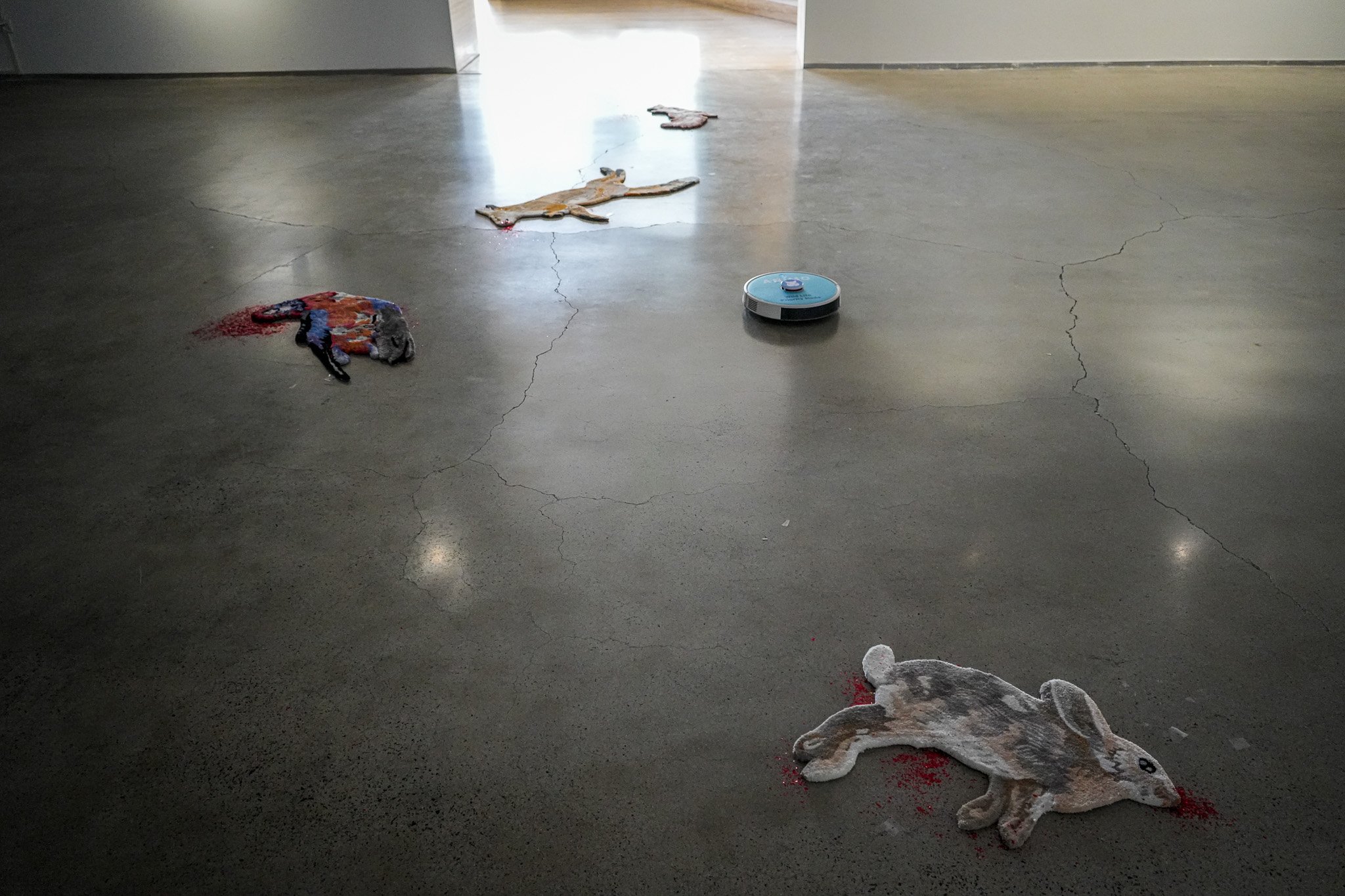
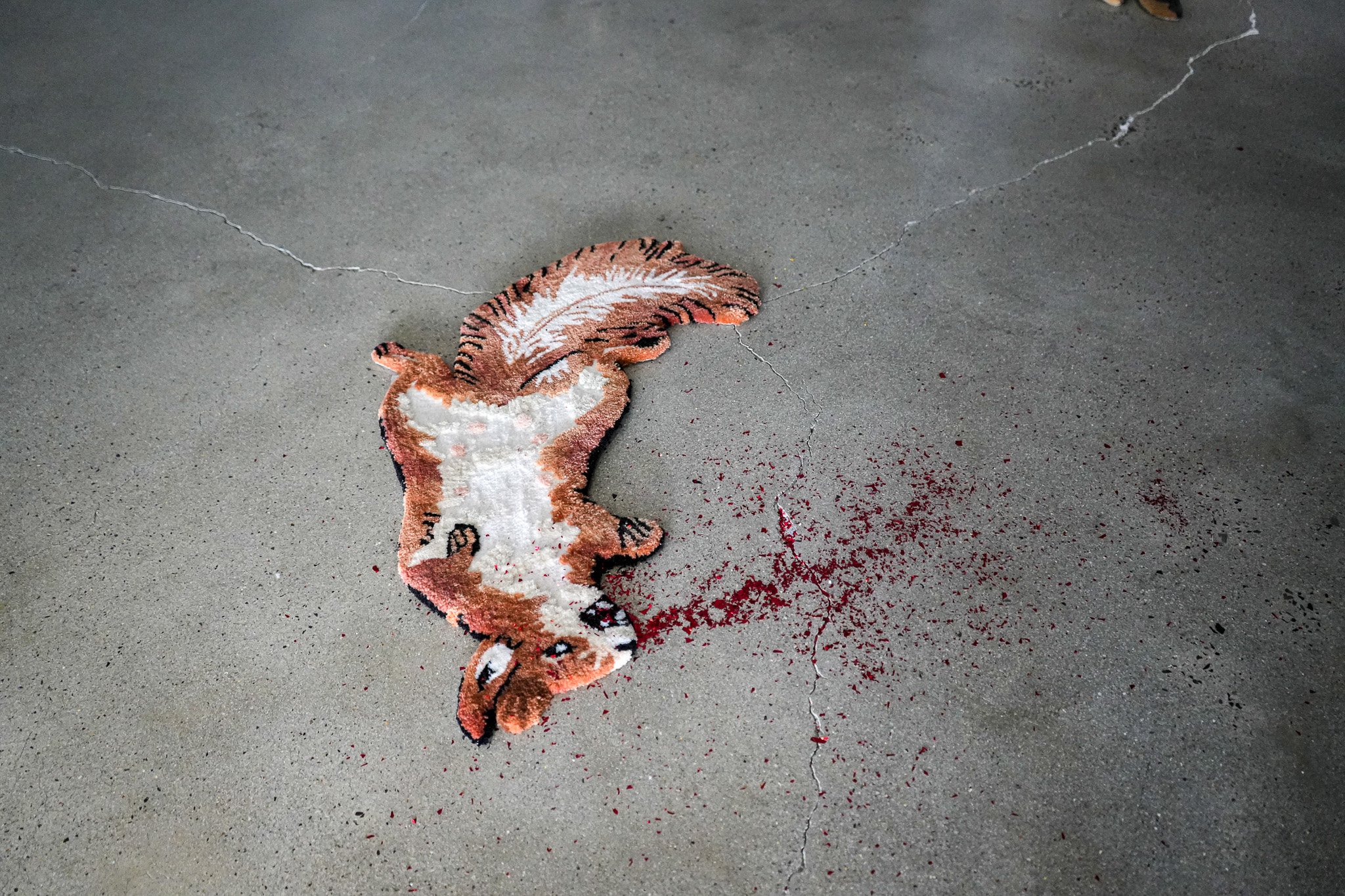

Exhibition view at Duende Art Museum, China


